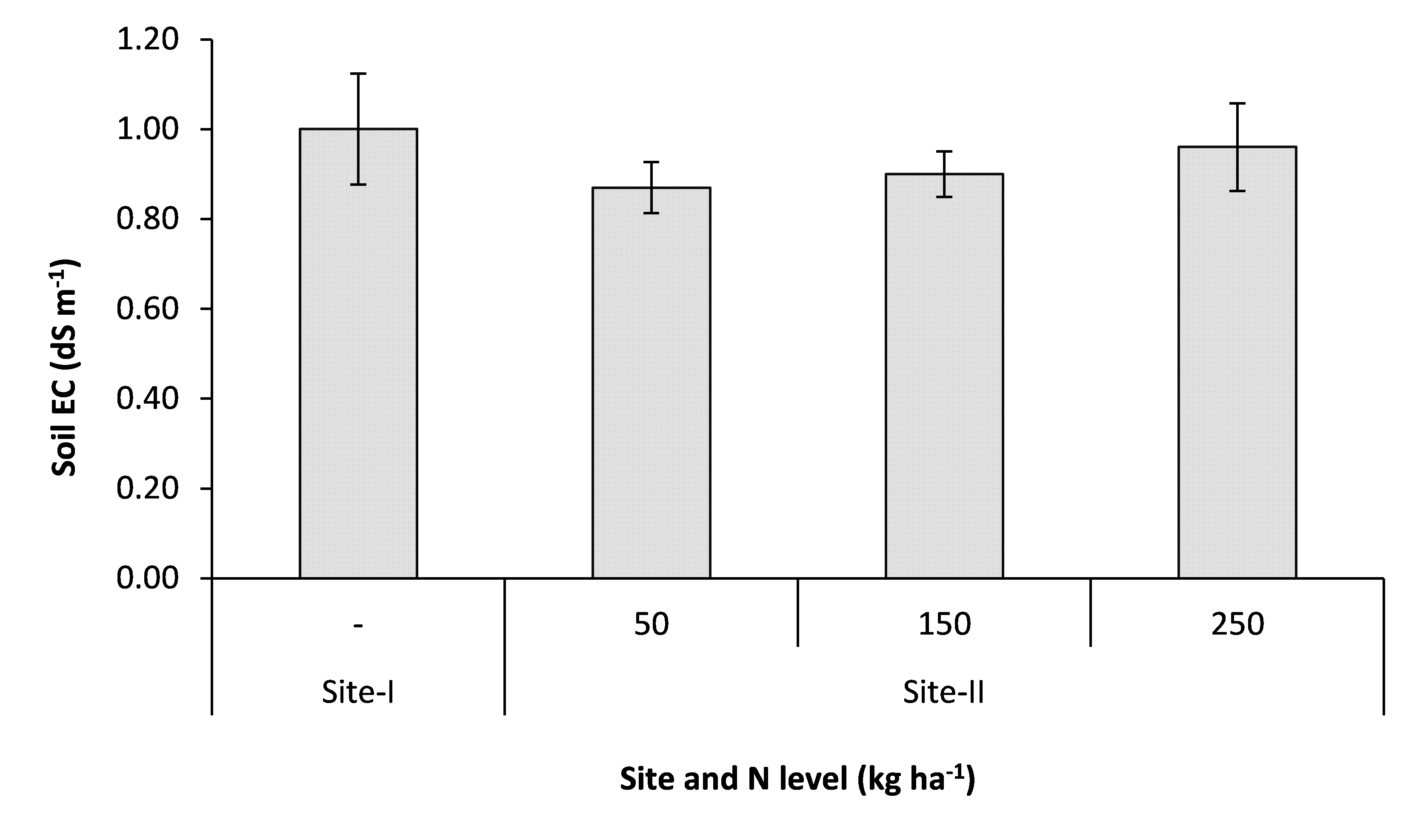Nitrogen Management Strategies for Enhancing Genotypic Performance and Soil Health in Potato Agroecosystems.
Keywords:
Potatoes, Genotypes, Nitrogen, Fertilizers, Soil PropertiesAbstract
A field experiment was directed at Agriculture Research Panjgur, Balochistan, during the Rabi season 2022–23 with an RCBD split plot arrangement to find out the effect of different potato genotypes and nitrogen levels on post-harvest soil properties. The potato genotypes, i.e., X1, X2, X3, and X8, are applied to the main plot, while nitrogen levels, i.e., 50, 150, and 250 kg ha-1, are applied to subplots. The effect of different potato genotypes and nitrogen levels is recorded on postharvest soil chemical properties, i.e., pH, electrical conductivity, lime content, organic matter, and texture, as well as soil NPK and carbon level. The crop is harvested at maturity, and samples are collected from all plots, cleaned, packed, labeled, and transpired in a laboratory incubator for analysis. The experiment was arranged in two sites; i.e., site I has only the effect of genotypes, while site II has the effect of genotypes as well as different nitrogen levels. The sample analysis at site-I reveals that the X7 genotype increases the EC, while the X7 genotype increases PH. The plot with a genotype of X8 showed the highest levels of organic matter, N, and P, while the plot with a genotype of X3 showed the highest levels of mineral nitrogen. Gen was observed in the plot with a genotype of X3. The highest results at site II indicate that different nitrogen levels and genotypes have exhibited different behaviors on the soil EC. Rogen levels and genotypes have behaved⁻¹ifferently on soil EC. The maximum EC was recorded at 250 kg ha1 of N, while the minimum was recorded at 50 kg ha1, while the response of the genotype to the nitrogen level on the soil pH is trending upwards as N levels increase, and the genotype X5 exhibits the highest response to nitrogen levels on PH. Genotype on nitrogen levels on pH, X5, gives the maximum value. The phosphorus and potassium give the same response to genotype; the maximum value of both is observed in the Xha⁻¹. The plot that received 150 kg ha-1 showed the highest K levels. 1. and maximum k was observed in the plot received 150 kg ha-1. The response to N fertilizer is the same in OM, and mineral N obtained the maximum value at 150 kg ha⁻¹, while phosphorus gave the maximum value at 50 kg ha⁻¹.50 kg ha1, while phosphorus gave the maximum value at 50 kg ha1.sss


















